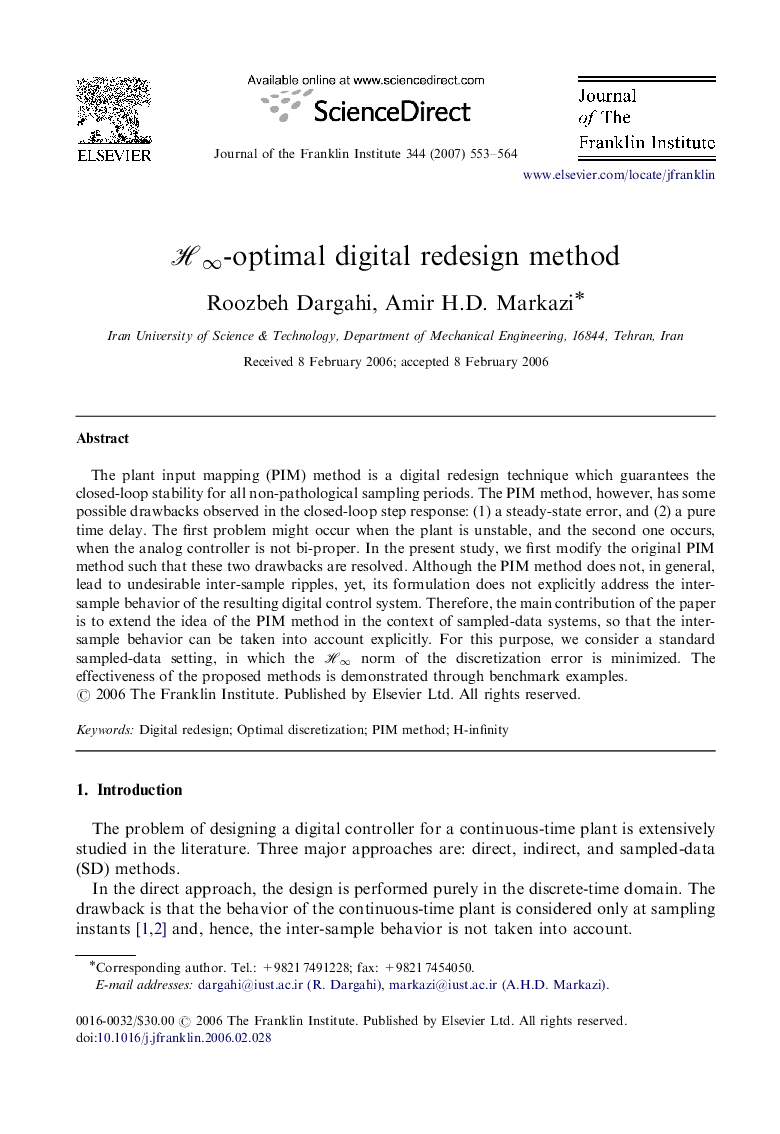| Article ID | Journal | Published Year | Pages | File Type |
|---|---|---|---|---|
| 4976129 | Journal of the Franklin Institute | 2007 | 12 Pages |
Abstract
The plant input mapping (PIM) method is a digital redesign technique which guarantees the closed-loop stability for all non-pathological sampling periods. The PIM method, however, has some possible drawbacks observed in the closed-loop step response: (1) a steady-state error, and (2) a pure time delay. The first problem might occur when the plant is unstable, and the second one occurs, when the analog controller is not bi-proper. In the present study, we first modify the original PIM method such that these two drawbacks are resolved. Although the PIM method does not, in general, lead to undesirable inter-sample ripples, yet, its formulation does not explicitly address the inter-sample behavior of the resulting digital control system. Therefore, the main contribution of the paper is to extend the idea of the PIM method in the context of sampled-data systems, so that the inter-sample behavior can be taken into account explicitly. For this purpose, we consider a standard sampled-data setting, in which the Hâ norm of the discretization error is minimized. The effectiveness of the proposed methods is demonstrated through benchmark examples.
Keywords
Related Topics
Physical Sciences and Engineering
Computer Science
Signal Processing
Authors
Roozbeh Dargahi, Amir H.D. Markazi,
